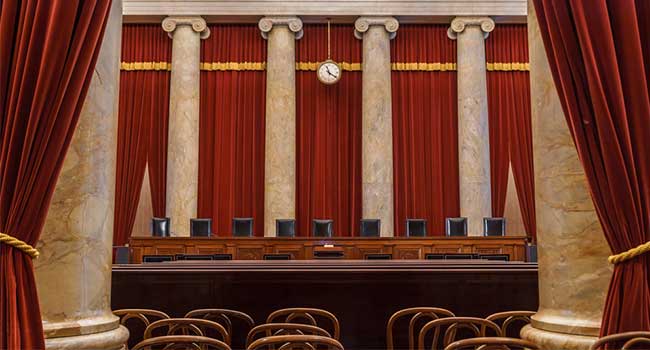
Securing the Supreme Court
Who protects the Court and its inhabitants?
- By Ralph C. Jensen
- Oct 10, 2018
With all the hoopla circling the Supreme Court of the United States, one has to wonder what security measures are in place to protect the justices, staff and the building itself. We have seen unruly crowds demonstrate in opposition to recent Supreme Court activities.
Who protects the court and its inhabitants? Does the Supreme Court receive protection from the Secret Service? The short answer is no. Unlike most members of the federal judiciary, they do not received protection from the U.S. Marshals Service either.
The U.S. Supreme Court’s protection is provided by the Supreme Court Police, one of the smallest federal agencies. The force itself numbers about 125 officers, and is led by the Marshal of the United States Supreme Court, though this person has no association with the U.S. Marshals Service. In the history of the position (created in 1867), there have been ten Marshals. By statute, the Marshal is appointed by the Supreme Court and serves at their discretion.
The Supreme Court Police provide personal protection to the Justices at all times. In many ways, their mission, training, and authority is similar to that of the judicial security role of the United States Marshals Service. I would fully expect that a large number of the members of this force have been cross-deputized by the Marshals Service to increase their authority and jurisdiction.
Supreme Court justices only get security protection during domestic trips outside the Washington metropolitan area when they request it.
Chief Justice John G. Roberts Jr. apparently did not seek protection from deputy marshals for the U.S. leg of a July 2015 trip to Japan, the group found.
Since several lines of redacted text appear in document fields about threat assessments, Justices Ruth Bader Ginsburg and Sonia Sotomayor might have faced threats on trips to New York and Massachusetts for which they did request marshals’ protection, the group said.
And details about protection of Justice Antonin Scalia during his fateful hunting trip to western Texas in February 2016 when he died show marshals were unaware of his potential failing health at the time and were absent from the scene for hours after his death, according to the documents.
“The public should be confident that Supreme Court justices are well-protected, both inside their building and when they venture out into the world,” said Gabe Roth, executive director of Fix the Court, a nonpartisan group that advocates accountability and transparency at the Supreme Court. “That the justices can decline protection when they travel to the most far-flung places in the country does not seem appropriate given the expansive reach and resources of the U.S. Marshals Service and the fact that so many justices choose to remain on the bench well into old age.”
The Supreme Court received $76 million in discretionary spending in fiscal 2017 for high court salaries and expenses, which includes security activities for the justices and the building. The court’s fiscal 2019 request seeks $84 million, in part to expand existing security activities.
“I think it would behoove Congress to find out how much it would cost for different levels of security,” Roth said, whether that be 24-hour, round-the-clock security when justices travel domestically, or just on certain trips to remote areas.
The Supreme Court Police handles protection for the justices in Washington and coordinates security when they travel abroad, Fix the Court said. But the Marshals Service, which is part of the Justice Department, picks up the security for domestic travel and is reimbursed by the court.
Units of the Supreme Court Police include Uniformed Services, Protective Services, Threat Assessment Unit, Background Investigation Unit, Honor Guard, Key Response Squad, HazMat/Bomb Response and Canine Unit.
Supreme Court officers are trained at the Federal Law Enforcement Training Center in Georgia. They may retire at the age of 50 with 20 years of qualifying service, or at any age with 25 years of service. They are awarded "enhanced retirement benefits."
About the Author
Ralph C. Jensen is the Publisher/Editor in chief of Security Today magazine.